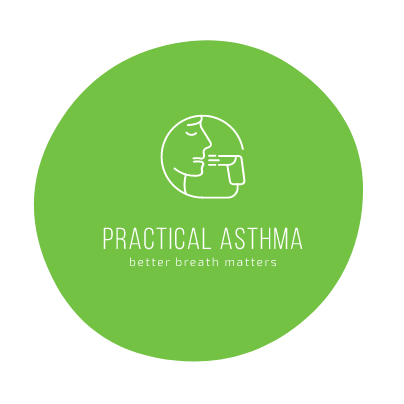When pollen flies again in spring, hay fever sufferers should pay more attention to their symptoms: Wheezing, tightness in the chest, coughing or shortness of breath can be warning signs that the allergy has developed into asthma. In Germany, up to eight million people are affected by this disease. Five to seven percent of adults have been diagnosed with asthma in their lifetime.
The disease is even more common in children: up to 10 percent of teenagers suffer from it. This makes asthma the most common chronic disease in children. Asthmatic diseases have increased in recent decades: “One of the main causes is probably the increase in allergic diseases in general,” says Dr. Andreas Hellmann, President of the Federal Association of Pulmonologists, Sleep and Respiratory Physicians (BdP). Allergies must be taken seriously as a disease: “Every second hay fever patient runs the risk of developing allergic asthma over time,” explains Dr. Hellmann.
In addition to allergic asthma, there is also non-allergic asthma, but only about 20% of asthmatics have it. The majority of them suffer from allergic asthma or mixed forms. The link between allergies and asthma is obvious: allergies to pollen or dust mites cause an inflammatory reaction in the airways. If the mucous membranes of an allergic person’s nose are not only permanently inflamed, but also the mucous membranes of the bronchial tubes react to the allergens and contract, this can trigger asthma. Typical symptoms are shortness of breath, coughing fits and a feeling of tightness in the chest.
Asthma has a considerable impact on the quality of life of those affected: “In addition to the physical problems, the disease is also a psychological burden. Asthma patients have to take medication all the time. For many, the constant fear of an attack is a source of stress. Or the fear of an airway infection – because such infections are often particularly severe and long-lasting in asthmatics,” explains Dr. Hellmann. “Fortunately, asthma can nowadays be well controlled in many cases. One can then lead a normal life with the disease, apart from medication. There are many Olympic champions who suffer from asthma.”
To avoid allergic asthma, one must treat one’s allergy in a causal way by hyposensitization: This method consists of slowly getting the body used to the allergen to which it reacts and learning to no longer be allergic to it. Only hyposensitization can prevent an allergy from developing into asthma. Nasal sprays and eye drops may relieve acute symptoms, but are ineffective in preventing asthma.
The WHO also recommends desensitization, which is effective in about 80% of patients. “Hyposensitization is particularly promising if done at an early stage of allergic disease, preferably in childhood,” says Dr. Hellmann. “Treatment becomes increasingly difficult in people with multiple allergies throughout the year. At the same time, this is when the risk of asthma is highest.”
Hyposensitization can be carried out by means of injections administered by the doctor or also in the form of tablets that the patient can take himself at home. The therapy lasts about three years. The current guidelines of the Allergy Societies (1) recommend choosing preparations that are licensed, have been proven effective in scientific studies and protect against the development of other allergies and asthma. The costs of hyposensitization are usually covered by health insurance companies.
(1) Guideline on specific immunotherapy. Guideline on specific (allergen) immunotherapy for IgE-mediated allergic diseases. Pfaar et al, Allergo J Int;23:282-319, 2014
